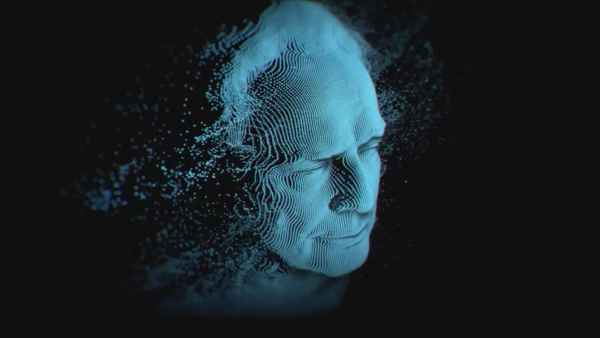Movie review by Greg Carlson
Fans and admirers of Marlon Brando won’t require any coaxing to see Stevan Riley’s hugely entertaining documentary “Listen to Me Marlon,” but the film is compelling enough to transcend its status as “mere” Hollywood biography. A visual and aural odyssey that explores the actor’s well-known career highlights as well as intimacies selected from hundreds of hours of previously private personal recordings narrated by Brando, the movie delights in showcasing a wealth of photographs, television appearances, and movie clips. Almost entirely narrated by Brando himself, “Listen to Me Marlon” covers all the expected bases – the emotionally complex relationship to his parents, the New York years with Stella Adler, the love affair with Tahiti, the social and civil rights activism – without the use of interviews with friends, collaborators, and experts.
Instead, it’s all Brando, including an eerie, illuminated 3D floating head. A few critics have dismissed the glowing avatar that Riley uses to initiate the film, but the effect, built from work Brando commissioned in the 1980s, implies a great deal about the actor’s depth of curiosity regarding the future of film and the lengths to which we may go to achieve some kind of life after death. Brando’s original intention for digitizing as much of himself as was possible via the now antiquated Cyberware purportedly involved some kind of obviously incomplete multimedia project, but the man was nothing if not forward thinking.
The least effective narrative strands in the film concern the 1990 death of Dag Drollet at the hands of Brando’s son Christian and the 1995 suicide of Brando’s daughter Cheyenne, who had been Drollet’s partner. Riley periodically returns to the media circus that set up tents in the aftermath of the Drollet shooting, but the lurid frenzy accompanying the trial isn’t given enough context to pursue the question of whether Brando’s responses on the stand and for the cameras were carefully calibrated “performances” or heartfelt expressions of genuine emotion. They could have been both.
As Brando speaks for himself, the viewer comes to understand how an individual so gifted could lose his religion, transforming the freedom, joy, and exhilaration that once accompanied his acting into the misery and contempt that clouded and shadowed the most unsavory aspects of studio filmmaking and its accompanying public relations game. Riley doesn’t hold back, peppering the viewer with scenes from several of Brando’s most embarrassing paydays (sometimes accompanied by the use of cue cards). But he also reminds us that Brando was as committed to Don Vito Corleone, Paul, and Colonel Walter E. Kurtz in maturity as he was to Lt. Ken, Stanley Kowalski, and Terry Malloy at the beginning.
Riley masterfully indulges the many unresolvable contradictions that “made” Marlon Brando without compromising viewer patience. And while his greatest onscreen achievements tend toward pretty heavy drama, Brando’s expansive and mischievous sense of humor unlocks an indispensable part of his persona (in one hysterical moment, Brando dismisses Connie Chung’s flattery with a perfectly timed explanation of his dog’s superiority as an actor). Brando shares some genuine insight into the acting process, and his bracing, practical input is one of the best things about “Listen to Me Marlon” – a reminder that we can sometimes discover the truth by telling lies.
